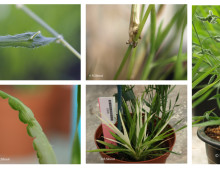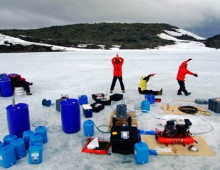How microbes respond to fracking
Unconventional natural gas extraction or fracking can lead to contamination and impact environmental health. Researchers plan to use high-throughput sequencing to reveal the microbial biodegradation pathways and adaptive strategies harnessed by microbial communities in response to potential fracking impacts. Through a controlled comparative genomics study, they hope to gain a clearer understanding of the natural… [Read More]

